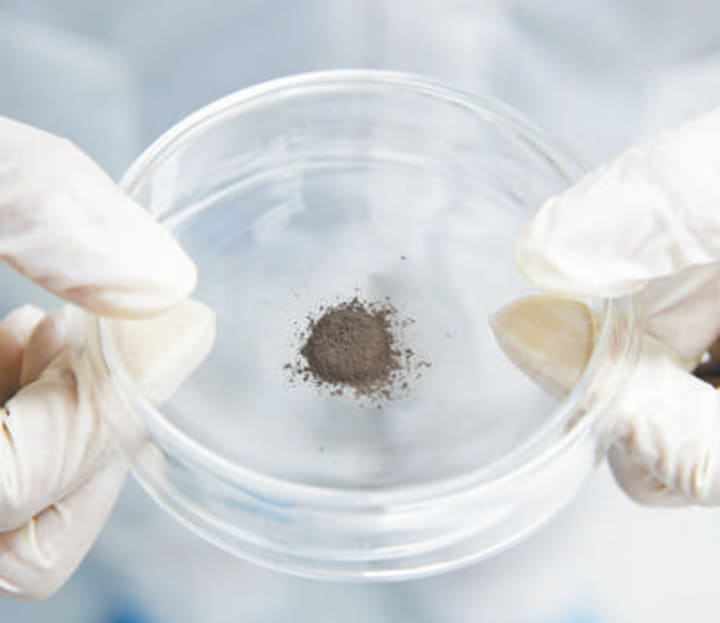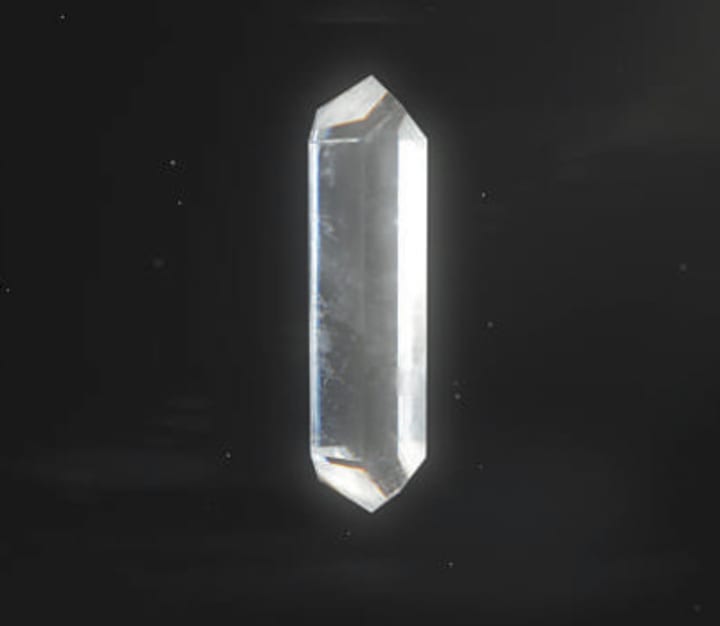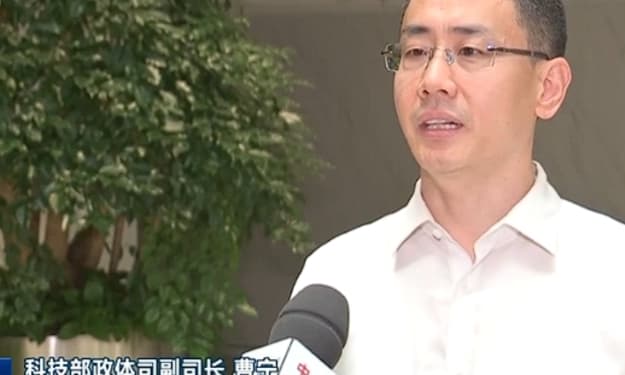The research achievements of the Chang'e 5 lunar soil samples from China have been published in more than 70 studies, revealing what mysteries?
ahong

The Chang'e 6 mission is about to return to Earth, and there is great anticipation for the lunar soil samples it has collected. How has the research on the lunar soil samples brought back by Chang'e 5 been over the past three years?
Up to now, the China National Space Administration has distributed 7 batches of a total of 85.48 grams of scientific research samples to 131 research teams in China, and more than 70 research results in various fields have been published in important domestic and foreign academic journals. Through the study of lunar soil, many mysteries of the moon are being unveiled.

On June 25th, Chang'e 6, which completed the sampling on the far side of the moon, will return to Earth with the "lunar package", marking the end of the first sampling return journey from the far side of the moon.
On December 17, 2020, Chang'e 5 brought back 1731 grams of lunar soil samples from the moon, which is the first time humans have obtained samples from the young volcanic rock area on the lunar surface, and it is also the first time that Chinese scientists have had their own extraterrestrial return samples.
In the past three years, the China National Space Administration has distributed 7 batches of a total of 85.48 grams of scientific research samples to 131 research teams in China, and the first batch of international applications has completed expert review. Currently, a total of 105 scientific papers have been produced, especially the discovery of the sixth new mineral on the moon, "Chang'e stone", through the geological dating of the samples, the end time of the moon's volcanic activity was postponed by about 800 million years, and innovative discoveries such as the mechanism of solar wind formation and other scientific achievements; when meeting with national leaders, 1.5 grams of scientific research samples were given to Russia and France respectively; they are on long-term display in venues such as the National Museum and the Party History Exhibition Hall, and have been publicly exhibited in Hong Kong, Macao and other places, fully exerting the popular science value of lunar public welfare samples.

Experts said that although the distribution of lunar soil samples only accounts for about 5% of the collected samples, the scientific research achievements obtained cover fields such as the formation of the moon, evolution, space weathering effects and mechanisms, and resource utilization, promoting the development of China's planetary science, training a team of planetary science researchers, and initially forming an integrated innovation and development of science, technology, and engineering.
Determine the age of the lunar soil samples, and postpone the end time of the moon's volcanic activity by about 800 million years
Experts introduced that the lunar soil samples of Chang'e 5 were collected from the basalt unit on the moon. These basalts are rocks formed by the overflow of magma from the lunar mantle to the lunar surface and solidified, and they record the code of the moon's evolution.
"The landing area of Chang'e 5 is one of the youngest basalt units on the moon. Previous studies speculated that the age of this area is between 1 billion and 3 billion years, but this speculation method has a great uncertainty." He Huaiyu, a researcher at the Institute of Geology and Geophysics, Chinese Academy of Sciences, introduced that using the independently developed ultra-high-resolution dating technology, the Chinese research team determined that the basalt of the Chang'e 5 lunar soil samples was formed 2 billion years ago, postponing the end time of the moon's volcanic activity by about 800 million years, and providing a key anchor point for the crater dating curve, greatly improving the accuracy of the crater dating of the inner solar system planets.

In addition to the exact time when the moon's magmatic activity stopped, the cause of the latest magmatic activity on the moon has always been a mystery. The scientific community previously had two possible explanations: the magma is rich in radioactive elements to provide a heat source, or it is rich in water to lower the melting point.
However, the latest research on lunar soil in China has ruled out these two mainstream views.
Researchers found that the initial melting of the basalt in the Chang'e 5 lunar soil samples did not enrich the "KREEP material" rich in potassium, rare earth elements, and phosphorus, and this result negates the hypothesis that the heat source of the initial magmatic melting comes from radioactive heat-producing elements.
As for whether the magma is rich in water, the research found that the water content in the lunar mantle is only 1-5 micrograms per gram, that is to say, the lunar mantle is very "dry".
Based on the above research, Chinese scientists have proposed a new mechanism for the formation of young volcanoes and a lunar thermal evolution model, and have put forward new directions and insights for future lunar exploration and research. The international academic journal "Nature" published a review article pointing out that "the Chang'e 5 mission has brought back the youngest volcanic rock samples ever collected from an area of the lunar surface that has never been involved before, and the research results of these rocks indicate that it is very necessary to revise the existing lunar thermal evolution model".
Study the origin of water on the lunar surface, and the solar wind brings usable water to the moon
In the past 10 years, many detectors and observation results have shown that there is water (OH/H2O) on the lunar surface, with high content in the polar areas, low content in the equatorial areas, and even water ice in the polar areas, and it changes dynamically with the duration of sunlight. Scientists believe that the solar wind, volcanic eruptions, asteroids, and comets may all be important sources of water on the lunar surface. However, due to the lack of direct sample analysis evidence, the origin and distribution of water on the lunar surface have always been controversial.
The latest research on the Chang'e 5 lunar soil samples by Chinese scientists shows that the water injected into the surface of the lunar soil particles by the solar wind in the mid-latitude region of the moon is more than previously thought, and the high-latitude region of the moon may contain a large amount of water resources with value for utilization.
Researchers have proven through the analysis of the ratio of hydrogen to deuterium that the water on the surface of the Chang'e 5 lunar soil particles is all injected into the lunar surface at high speed by the solar wind. Research personnel found that the average speed of hydrogen ions emitted from the sun reaches 450 kilometers per second, and they hit the surface of the lunar soil particles like bullets.
Through infrared spectroscopy and nano-ion probe analysis, the research team of the Institute of Geochemistry, Chinese Academy of Sciences, found that there is a large amount of water caused by the solar wind on the surface of the Chang'e 5 minerals. According to estimates, the solar wind proton injection contributes at least 179ppm (concentration unit) of water to the Chang'e 5 lunar soil, which is equivalent to at least 170 grams of water per ton of lunar soil.
Based on the results of the re-heating experiment analysis, the research team conducted numerical simulations on the preservation of hydrogen in lunar soil particles at different temperatures, and the results showed that the water caused by the solar wind can be well preserved in the mid and high latitude areas of the moon. This study confirms that the minerals on the lunar surface are an important reservoir of water and provides an important reference for the distribution of water in the mid-latitude region of the moon.
Experts said that this discovery is of great significance for the future utilization of lunar water resources. China plans to build a scientific research station in the south pole of the moon, and the research shows that the water content in the south pole area of the moon may be more than people thought before, and the water in these lunar soils can be easily mined and utilized through particle size separation and heating.
Study the extraction of helium-3 in lunar soil to provide basic scientific data for the development of lunar energy
As a potential fusion fuel, helium-3 is considered a future energy source. Some scientists estimate that if there are 1 million tons of helium-3, it can provide 10,000 years of clean energy support for the Earth.
Li Junjie, a senior engineer at the Beijing Geological Research Institute of the China National Nuclear Corporation, introduced that the reserves of helium-3 on Earth are very low, while the reserves on the moon are very rich. Through the stage heating extraction of helium-3 from the Chang'e 5 lunar soil samples, researchers have established the best extraction temperature parameters for helium-3 in the lunar soil. These key scientific data provide basic support for the estimation of the total amount of helium-3 resources on the moon in the future, as well as the exploration and development of helium-3 resources.
In the study of lunar helium-3 resource mining methods, the joint team of the Ningbo Institute of Materials Technology of the Chinese Academy of Sciences and the Qian Xuesen Space Technology Laboratory found that there is an amorphous glass layer on the surface of the titanium-iron mineral particles in the lunar soil. Given the high solubility of helium in titanium-iron minerals, researchers believe that helium atoms are first injected into the titanium-iron mineral lattice by the solar wind, and then gradually released under the diffusion effect of the lattice channels. The surface glass has an amorphous structure with atoms piled up in disorder, which limits the release of helium atoms. Helium atoms are captured and gradually stored, forming bubbles.
Based on this discovery, researchers have extracted helium-3 stored in the form
About the Creator
ahong
I'm Ahong, a writer painting China's stories for the world. Dive into tales that blend tradition with the contemporary, right from the heart of China.
Enjoyed the story? Support the Creator.
Subscribe for free to receive all their stories in your feed. You could also pledge your support or give them a one-off tip, letting them know you appreciate their work.






Comments
There are no comments for this story
Be the first to respond and start the conversation.